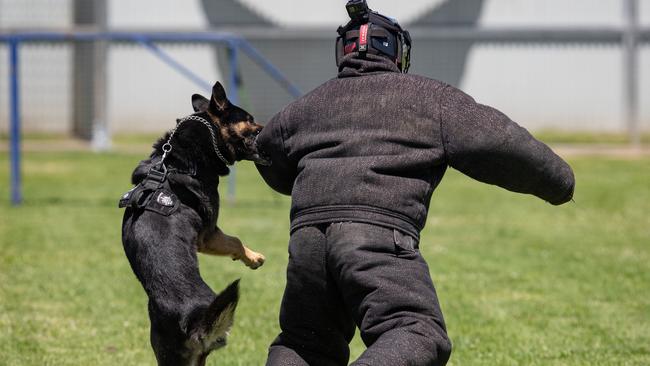
They are the specialist dog squad tasked with keeping illicit drugs out of the state’s most dangerous prisons — and the inmates that call them home inside its walls. Watch the mini documentary here.
Inmates inside the state’s most dangerous prisons fight to bring millions of dollars worth of drugs, weapons and mobile phones behind the bars of their cells every year.
However, a dedicated team of specialist K9 unit officers, within Corrective Services’ highly-trained Security Operations Group, are tasked alongside their front line, four-legged companions with keeping contraband out and prisoners in.
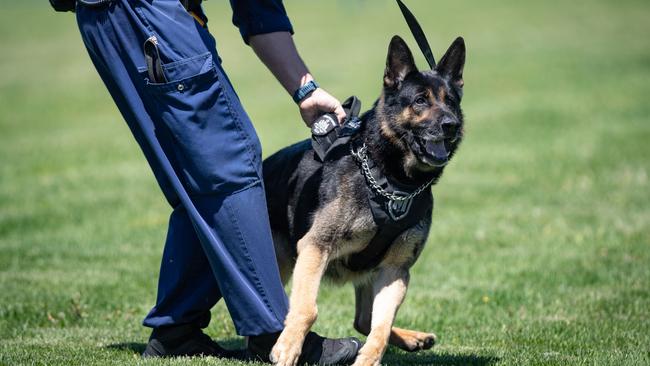
Corrective Services NSW Senior Assistant Superintendent and dog handler Ellen Forsyth revealed that while face-to-face visitation between inmates and their families may have once been one of the most common way drugs, mobile phones and weapons were smuggled into prisons across the country, criminals are “diversifying their approach” by using postal services and even drone drops in an attempt to outsmart officers.
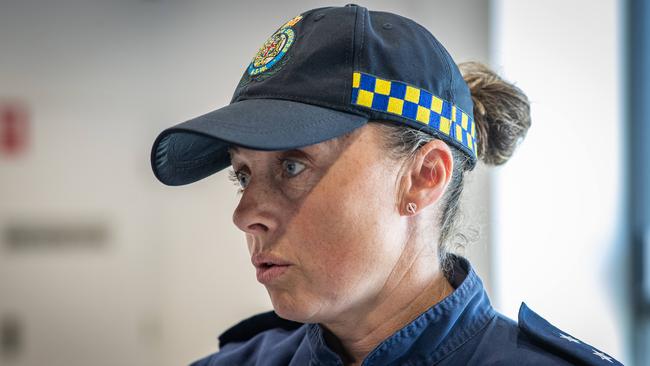
The 24-year veteran officer, and her dedicated team of officers embedded in correctional facilities across NSW, spoke exclusively with NewsLocal as part of the Behind the Bars investigative series — revealing what it takes to be a part of the team and the challenges they face protecting the line between the outside world for our dangerous prison system.
WATCH BEHIND THE BARS EPISODE TWO HERE

“It is going to hurt,” the officer said moments before journalists Jake McCallum and Alexi Demetriadi were preparing to run the gauntlet against security K9 ‘Rage’.
“You will feel pressure, we try and give as much protection as we can — but it is still going to hurt.”
One of the main tasks canines inside prisons train for regularly is security, riot response and prisoner escape.
NewsLocal journalists were put to test and ordered to gain the attention of the dog before trying to flee.
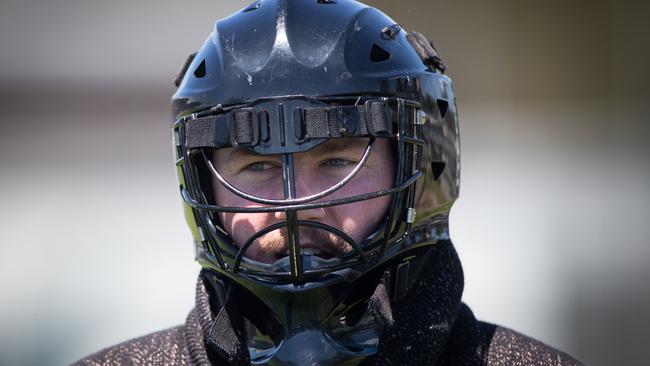

Despite a massive headstart, specialist K9 Rage leapt through the air and ploughed his strong jaw into the arm of the escaping ‘offender’, apprehending them within seconds as responding officers rushed to bring them back into custody.
There was no stopping Rage from completing his objective — stopping escaping inmates in their tracks.

Officer Forsyth said canines were not only used as a show of force for security purposes inside some of Australia’s most dangerous complexes, but were also trained to detect a wide variety of drugs and the lithium batteries inside smartphones.
“Primarily, they were always drug detection dogs,” she said. “But we’ve since evolved to include Lithium detection with the dual purpose canines.”
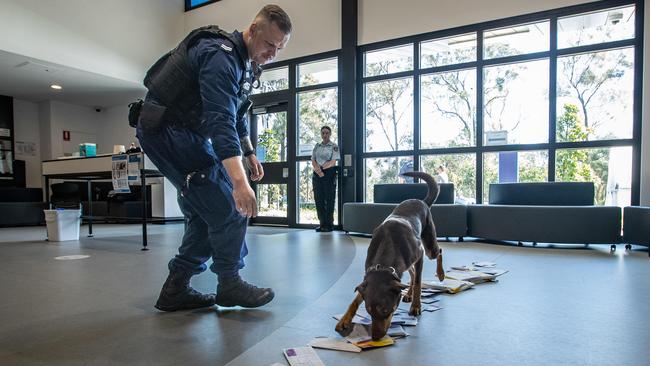
The K9 Unit boss said multipurpose dogs were used in public centres ranging from Kempsey in the north of the state to Wellington in the central west, and down to Goulburn in the south.
A massive 293 searches of visitors, their property and vehicles has been conducted across NSW in the last financial year along by the K9 Unit, which is also deployed to assist with inmate searches.
Inducting NewsLocal reporters into the squad at their western Sydney headquarters for the day, Corrective Services officers showed the capabilities of their team by planting a small bag of methamphetamine on reporter Alexi Demetriadi, before tasking a general purpose dog with finding it during a line up at the medium security women’s facility, Dillwynia Correctional Centre.
Within seconds the canine had identified the scent and was working to pinpoint where the illicit drug was being hidden, moments later he was indicating to the reporter’s front pocket.
Corrective Services Assistant Superintendent and dog handler Luke Haines said some of the most frequent examples of contraband uncovered by the K9 unit include smartphones and buprenorphine — a substitution for opioid addiction commonly known by its brand name Suboxone.
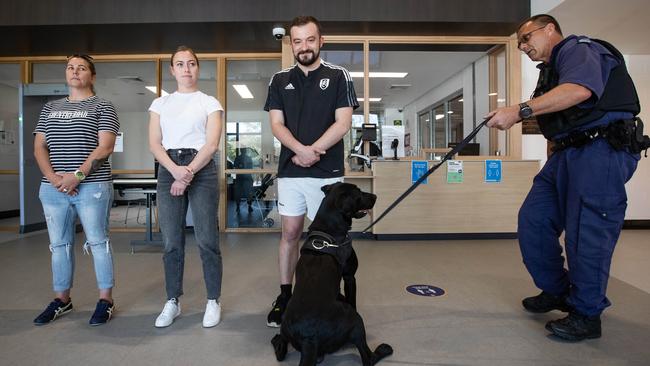
“Suboxone strips, which sell from about $20 at a pharmacy, are the most current contraband of choice,” he said. “Once they get inside a correctional centre, their market price skyrockets, we have evidence to suggest they go for $1500 to $2000 a strip.
“The reason they are so popular is they are easy to conceal in postal packages, behind stamps and within letters — a single strip of Suboxone can be cut up into smaller hits and sold off.”
In 2021, NewsLocal revealed Justice Health officials inside NSW prisons were actively injecting buprenorphine into almost 900 prisoners every month as part of a stringent program thousands more were desperate to join.
The Opioid Agonist Treatment within NSW Prisons work to reduce opioid dependency rates, but that doesn’t stop inmates not applicable for the program from trying to smuggle buprenorphine into the prison community.
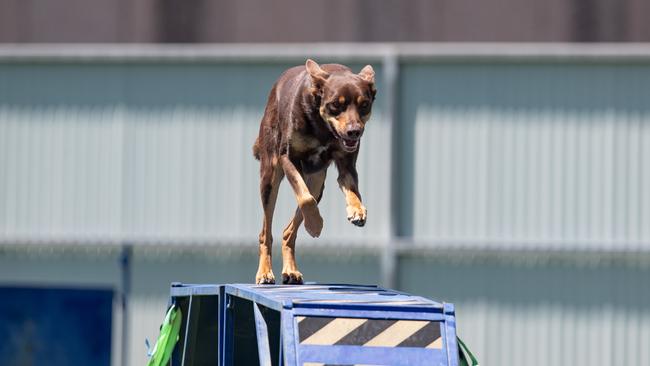
Meanwhile, a NewsLocal investigation earlier revealed a 20-year-old Islamic State Terrorist took a Mid-North Coast Correctional officer hostage for several hours after he was rejected from the buprenorphine injection program — demanding negotiators secure him a position on the Justice Health initiative.
The K9 unit embedded inside prisons across the state are not only tasked with de-escalating dangerous situations like this one, but stamping out the introduction of illegal contraband — including buprenorphine — in the first instance.
Officer Forsyth said dogs don’t have to be a specific breed or be introduced to the program as a puppy — instead they are assessed on suitability based on their temperament, hunt drive and suitability through an initial 21-day trial period where they are exposed to different environments before undertaking an intensive 14-week course.
She said some of the unit’s “best recruits” have been rescue dogs from the NSW RSPCA or found through online sales, with a current network of 44 handlers and dog teams across NSW.

The age-old adage, never work with children or animals, applies in a lot of professions — but the longest-serving dog handler in the state’s prisons system wouldn’t have it any other way.
“My main motivation was always to be a dog handler, it wasn’t actually to be a prison officer,” Senior Assistant Superintendent Ellen Forsyth told NewsLocal. “But the perks of being a prison officer was the opportunity to be a handler, and the ability of having your best mate go to work with you everyday.”
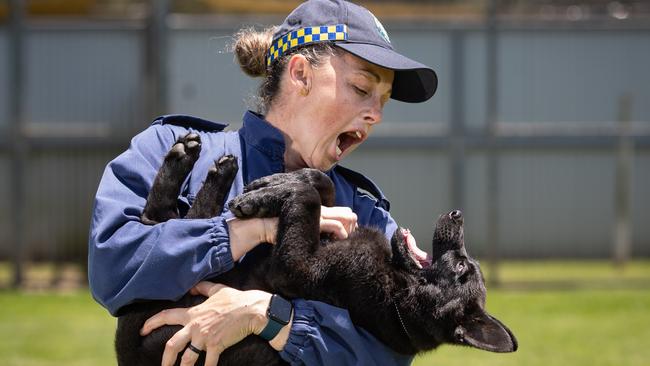
Officer Forsyth is the state’s longest-serving dog handler, leading the K9 Unit at Security Operations Group (SOG), based out of the Francis Greenway Correctional Complex in Sydney’s western suburbs.
Although the pictures of Ms Forsyth with newest recruit Havoc may not show the unit’s most feared canine cadet — it does show evidence of the hard work and training the handlers and dogs undertake to be the best in their field.
“Being able to train and see new dog handlers becoming very experienced always makes me happy,” Ms Forsyth said.
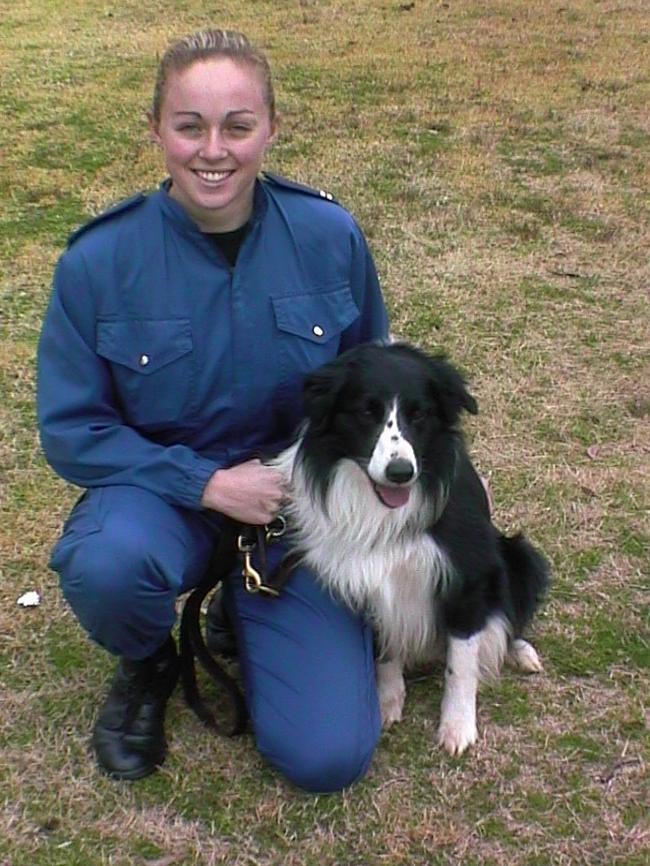
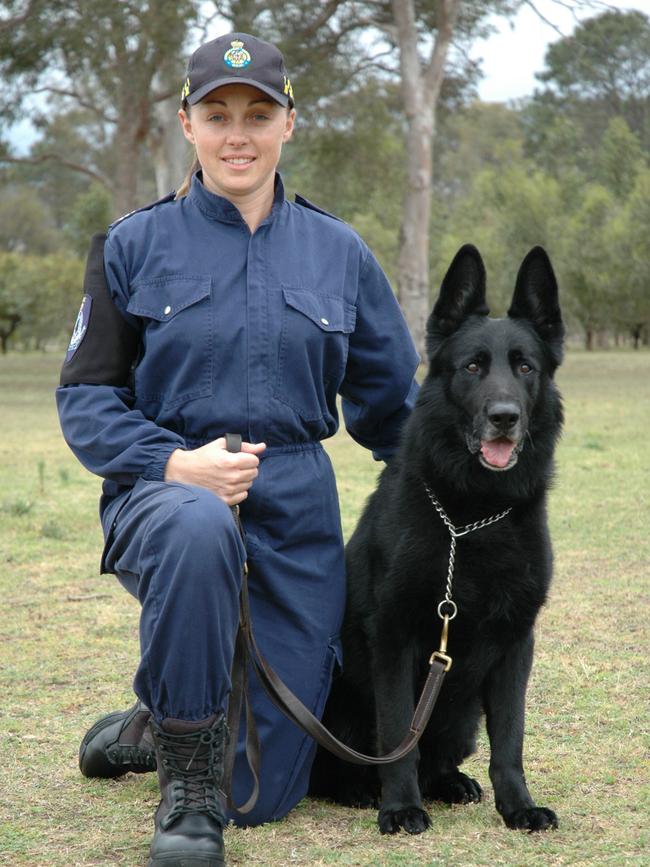
Ms Forsyth has been with the organisation for 24 years — 22 of those as a dog handler — and is also responsible for all 44 canine units across the state.
The profession, she said, has come a long way since she was a new recruit.
“When I first started, it was a closed shop, we didn’t have the internet and all those things,” she said. “If we wanted to liaise or train with people in Europe or America, you would have to pay thousands of dollars to take a trainer overseas.
“But now we have access to expertise across the world, and to see that evolution has been amazing.”
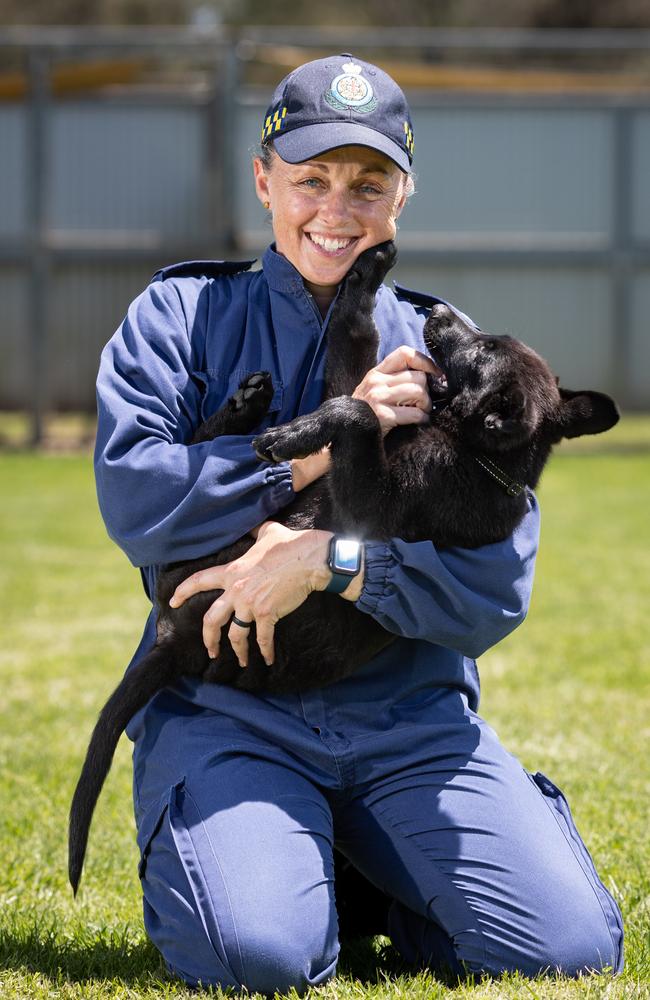
A career peppered with experiences, Ms Forsyth did recount one particular memory where her dog ‘Rookie’ was a bit too good.
“It was all Rookie, I had nothing to do with it,” Ms Forsyth said.
“We were attached to the western region and we used to do contraband searches during weekend detention. Rookie was so good that one of the bosses said: ‘if you bust any more inmates I’ll have to close for the weekend because we’ll have no one left to look after’.”
For 22 of her 24 years in the profession Ms Forsyth has been at SOG, where she runs the unit with Assistant Superintendent Luke Haines, who said being a dog person does help in the role.
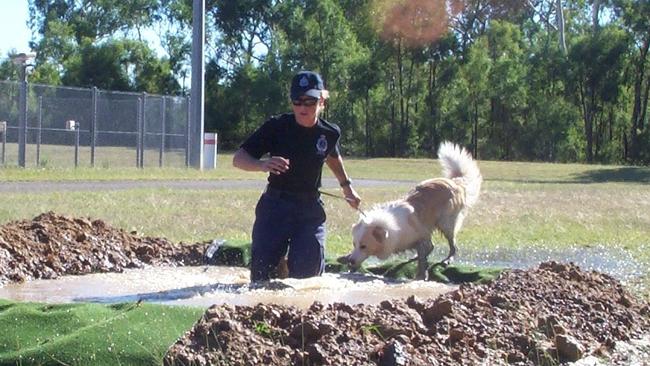
“A natural affinity with canines is a big part of the job,” Mr Haines, who has been a handler with corrective services since 2010, said.
“The dogs don’t necessarily have to love you, but you have to be able to work very closely with them day in, day out.”
Ms Forsyth said that affinity was evident every day.
“There are a lot of fallacies out there as to how we train or mistreat our dogs,” she said.
“But our dogs go home with us every single night.
“I actually spend more time with my dog than I do with my own child and my husband.”

Add your comment to this story
To join the conversation, please log in. Don't have an account? Register
Join the conversation, you are commenting as Logout
One of four teens accused of filming six-hour rape named
Four teens have been charged over the alleged six-hour sexual assault of a 17-year-old girl in Sydney’s west, with police alleging they filmed snippets of the ordeal and shared them with each other.
U19s NRL pipeline: Staggering numbers show NSW’s dominance over Queensland
New South Wales has long done the heavy lifting in producing NRL talent, and the latest stats prove that. See the staggering State of Origin U19s numbers showing just how many make the grade.